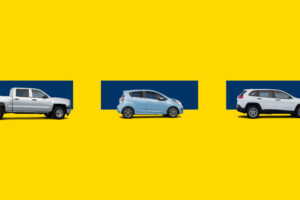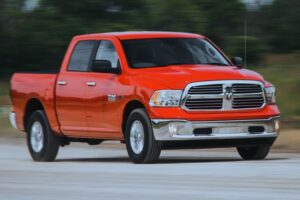The Yamaha C3 scooter, also referred to as the Yamaha XF50, is a 49cc liquid-cooled, four-stroke scooter that is easily noticeable for its box-like rear section. The name C3 means cubic space. The Yamaha C3 stresses functionality and styling.
Offering more than just style, the Yamaha C3 scooter offers great storage capacity and a strong engine. It offers a comfortable ride and better driveability. The C3 also has excellent mileage of up to 115 miles per gallon (2L per 100 km).
Read on to learn more about the Yamaha C3 and its key features and specs.
About the Yamaha C3 Scooter
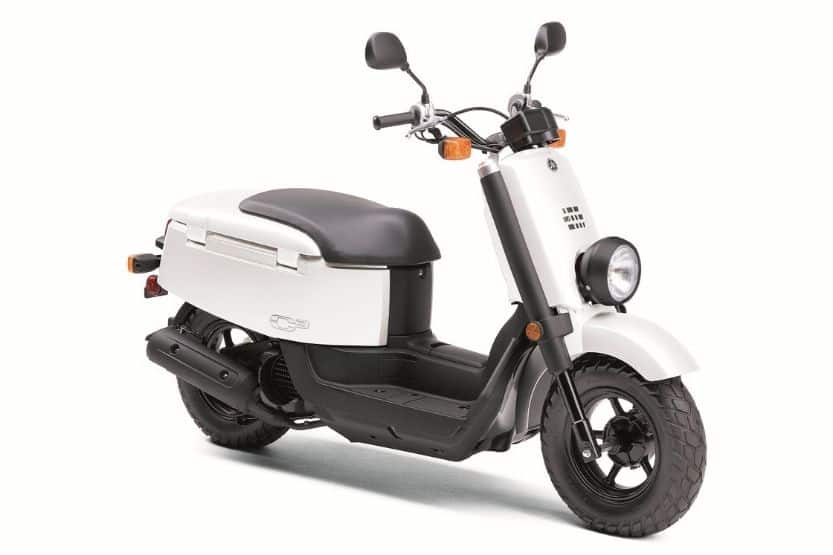
More than style, the Yamaha C3 scooter offers an excellent storage capacity, powerful engine, comfortable ride, and exceptional mileage (115 miles/gallon or 2L/100 km).
The Yamaha XF50 is marketed as the C3 in North America. The scooter is called the Yamaha Vox in Japan and Yamaha Giggle in Europe. The Yamaha C3 was first launched in 2007. The scooter has a unique design.
It has a notable box-like in its rear section, which is meant to provide a large storage area.
When the Yamaha C3 was first introduced, the 3rd 50cc scooter in the Yamaha’s strong lineup followed the Vino 50 and the Zuma. The Yamaha C3 is impressive, but it was not as popular as the other Yamaha motor scooters.
However, the Yamaha C3 sold well enough to stay in the US market for five years, from 2007 to 2011. For 2012, the uniquely-styled Yamaha C3 did not make it to the USA lineup.
What made the Yamaha C3 attention-grabbing is the trendy “box” design. It delivers retro functionality that still allows customization. With the box design, the Yamaha C3 offers a great storage capacity. It can store up to 9 gallons.
The Yamaha C3 comes with a wide, comfortable seat that has a height of 28.9. To make things better, it also comes with an instrument display that provides all the needed information.
In the display, the rider can easily see the speedometer, fuel gauge, odometer, high-beam light indicator, and engine management light indicator.
Yamaha C3 Scooter Specs and Features
1. Engine and Drivetrain
The Yamaha C3 is equipped with a 49cc liquid-cooled three-valve, 4-stroke engine. It has an electronic ignition and a V-belt transmission that offers easy throttle-and-go operation.
The engine is powerful, low-maintenance, and quiet. It’s also equipped with electronic fuel injection and the 19mm Mikuni throttle body that comes in handy in all conditions, making cold starts easy.
2. Chassis and Suspension
The Yamaha C3 features fat, 120/90-10 rear and front wheels that offer rugged looks and impressive traction on varied surfaces. The big-diameter steel-tube frame offers great handling, strength, and long life.
The scooter’s motorcycle-type handlebar can be replaced conveniently for different styles and bends.
3. Brakes
The Yamaha CS3 is equipped with front/rear 110 drum brakes.
According to the United States Environmental Protection Agency, this scooter from Yamaha has an estimated consumption of 115 miles per gallon (2L per 100 km).
However, the fuel economy is greatly affected by the road condition, driving habits, driver’s and passenger’s weight, maintenance, and a lot more.
4. Fuel Capacity
The fuel capacity of the Yamaha C3 is 1.2 US gallons or 4.5 L.
5. Dimensions
The Yamaha C3 scooter has a length of 73in (1,854mm), a width of 27in (686mm), and a height of 41.1in (1,044mm).
6. Top Speed
The Yamaha C3 has a top speed of 37 mph. This is slightly restricted by a wash that prevents the top end gearing. If you want to increase the mph, you could remove it, but it also decreases uphill performance.
7. Optional Features
This Yamaha scooter comes with an optional rear rack. It comes with an optional widescreen that is meant to protect from debris and wind.
Pros and Cons of the Yamaha C3 Scooter
Pros
Generally, the Yamaha C3 is an excellent scooter, which is backed up by many Yamaha C3 scooter reviews. However, it has some drawbacks too. But these drawbacks are not enough to outshine the positive things about this scooter.
The engine is the most impressive thing about the Yamaha C3. The engine raised the bar for 50cc engine technology. It is liquid-cooled, 3-valve and fuel injected. Aside from being technologically ahead, the engine of the Yamaha C3 is also powerful and fuel-efficient.
It performs better than Honda’s current engine. And in terms of faster acceleration, the Yamaha C3 is better.
Another thing that truly stands out with the Yamaha C3 is the storage. It is designed to deliver amazing storage space. This is something that most people appreciate the most.
Aside from the engine and storage, the mileage is really great too!
Cons
While the engine, storage, and mileage are considered top class, styling is not something everyone appreciates. It has a nice floorboard, exhaust, rims, and gauges, but the scooter’s front end is a bit cartoonish.
Some people may like the overall style, but some could find the styling disappointing.
Another thing about the Yamaha C3 scooter specifications that is not really satisfying is the drum brake. Yamaha opted to use the drum brake instead of a disc, which they used on the Zuma and Vino 50 models.
Speed Limitations of the Yamaha C3
In North America, the Yamaha C3’s top speed was limited. A washer was placed on the end of the boss shaft of the transmission. The function of the washer was to limit the potential front diameter of the belt.
Removing the washer can increase the speed to 40 mph. However, washer removal may void the Yamaha warranty.
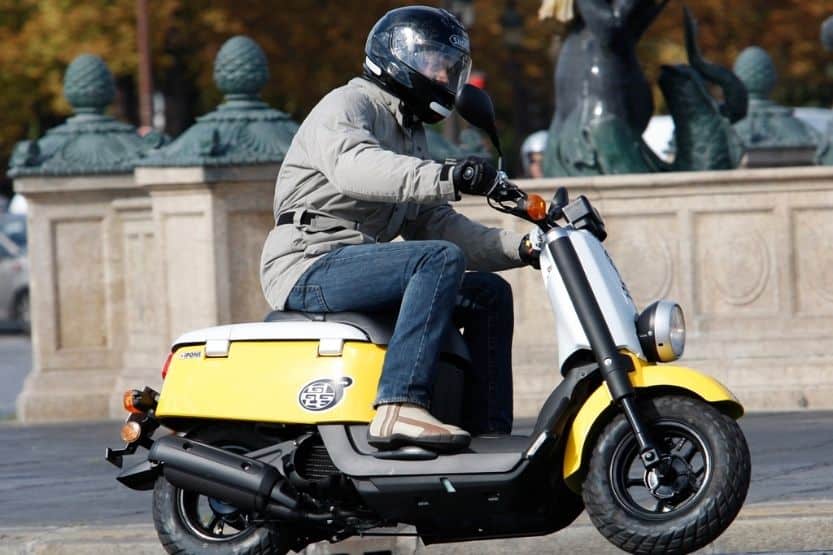
In Europe, the Yamaha Giggle used a different sheave variation, limiting the scooter to have a top speed of 31 mph. When modified, the Giggle can get up to 38 mph. Aside from this, the European version of the Yamaha C3 also had a lower revolution limit.
C3 Scooter Value
There are so many things you need to consider when it comes to value. If you are looking for a friendly, small, and affordable scooter, then the Yamaha C3 is a great value. However, if you are looking for performance and high-end features, the Yamaha C3 is not the scooter for you.
In general, when it comes to value, one should always consider if the scooter best suits your needs and desires without spending too much. If you compare the Yamaha C3 to Honda Metro, I will take the C3 because it looks better and unique.
Again, the Yamaha C3 scooter is an excellent choice of scooter since, more than its style; the Yamaha C3 scooter also offers great storage capacity, powerful engine, comfortable and easy ride, and lastly, an excellent mileage of up to 115 miles per gallon (2L per 100 km).
Rivals of the Yamaha C3
In the lower end of the scooter market, there is a great deal of competition. Among the few that are a close rival to the Yamaha C3 are the Honda Metro and the Kymco S People.
Let’s compare Yamaha C3 with the other two scooters:
1. Price
The Yamaha C3 costs a little over $2,000, just like the Honda Metro. The Kymco S People cost about $350 more.
2. Engine
The Yamaha C3 and the Honda Metro have a 4-stroke liquid-cooled engine, while the Kymco is air-cooled. They have a 49cc displacement.
3. Fuel System
The Yamaha C3 features an injected fuel, while the other two have carbureted fuel systems.
4. Transmission
All three scooters have the CVT transmission.
5. Dry Weight
The dry weight for the Yamaha C3, Honda, and Kymco is 187 lbs., 163 lbs., and 225 lbs., respectively.
6. Seat Height
The seat height for these scooters does not really differ. The Yamaha C3 and the Kymco S People have the same height. The Honda Metro, on the other hand, is slightly lower, with 28.3 inches.
7. Fuel Capacity
These scooters have a fuel capacity of 1.2 gallons, 1.3 gallons, and 1.8 gallons for the Yamaha, Honda, and Kymco models.
8. Suspension
All three scooters have a telescopic forks suspension and single-shock rear suspension for the Honda and Kymco scooters. The Yamaha C3 is equipped with the swing unit rear suspension.
9. Tire
The front and rear of the Yamaha C3 are 120/90-10 and 90/90-10 for the Honda Metro. The Kymco S People’s tires are 100/80-16 in the front tire and 110/70-16 in the rear tire.
10. Brake
Both the Yamaha C3 and the Honda scooter have a drum front and rear brake. On the other hand, the Kymco S people have a disc front brake and drum rear brake.
11. Warranty
In terms of the warranty, both the Yamaha C3 and the Honda Metro come with a 1-year warranty. The Kymco model has a 2-year coverage.
Yamaha C3: Generation Timeline
2010 – 2011
The 2011 year model of the Yamaha C3 is the last version sold in the US market. The Yamaha C3 2011 carried the features that many riders have loved. It was boxy like its predecessor and packed with functionality and rideability.
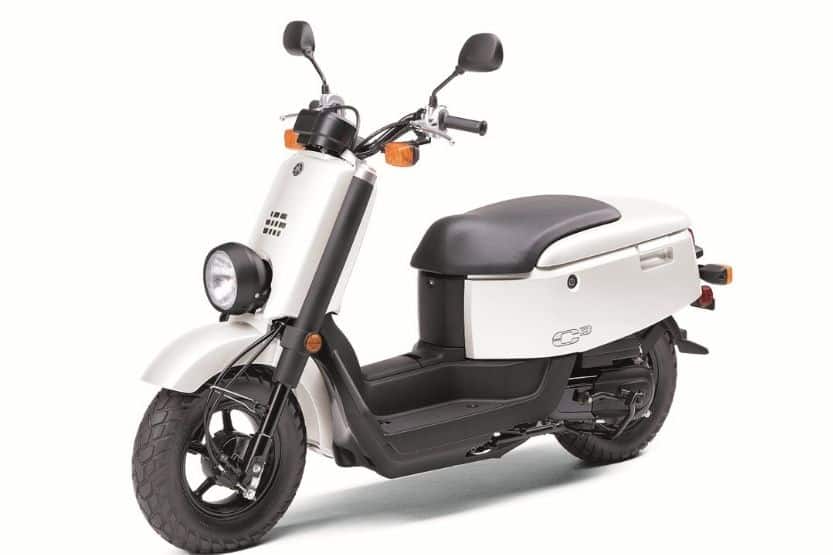
Moreover, it has a modern inverted fork, clean lines, and generous under-seat storage. Furthermore, it was one of the most spacious 49cc scooters available during its time. The Yamaha C3 2011 was truly a modern machine for the modern generation.
2009 – 2010
The 2010 Yamaha C3 was not a treat for everyone. It showed a strong personal character and had a boxy design. It was functional, fun, and fuel-efficient. The storage was incredible as well, making it ideal for shopping. The engine also offers a swift getaway in the city scene.
2008 – 2009
The 2009 model of the Yamaha C3 gained both positive and negative feedback. Some hated it, while others loved it. However, it was no doubt that the design of the Yamaha C3 is very attention-grabbing.
It has a boxy design with an edgy allure. It was ideal for urban commuters because of its generous storage space.
2007 – 2008
The boxy-looking design of the first Yamaha C3 immediately caught the attention of the riders. The look is unique for a two-wheeler. It was totally different from everything else in the scooter world.
There are two major things that people loved about the Yamaha C3 – the distinctive design and the spacious storage,
During its time, the Yamaha C3 was known for its functionality and fuel-efficient. The 49cc engine offered an impressive mileage, which made the scooter an ideal vehicle for daily use. The scooter was also equipped with fat, wide tires that deliver reliable traction on varied surfaces.
Frequently Asked Questions
How Much Horsepower Does a Yamaha C3 Have?
The Yamaha C3 has a horsepower of 3.8. This Yamaha scooter has a 49cc liquid-cooled, fuel-injected, 4-stroke engine. It has a compression ratio of 12:1.
Is the Yamaha C3 Expensive?
With the 2011 model, the Yamaha C3 scooter cost a little over $2,000. Considering the features of the scooter, the Yamaha C3 is considered a reasonably-priced scooter.
Which Is Better, the Yamaha C3 or the Vino 50?
The Vino 50 and Yamaha C3 are both affordable. The 2013 model of the Vino 50 comes with a fuel-injection fuel system. With the new engine, the Vino 50 has a top speed of 40 to 43mph.
What Is the Top Seed for a Yamaha C3?
The Yamaha C3 has a top speed of 37 mph.
What Is the High Mileage for the Yamaha C3?
The Yamaha C3 has a mileage of 115 miles per gallon, which means 2L per 100km. The mileage is affected by the driving habit, maintenance, road condition, and a lot more.
Is the Yamaha C3 a Good Scooter?
The Yamaha C3 is considered a good scooter, especially if you are looking for good storage and price. The Yamaha C3 also has a reliable engine.
Conclusion – Yamaha C3 Scooter
The Yamaha C3 has a powerful engine. It offers a good blend of comfort, storage, and driveability. It is easy to ride and fun. Overall, it is an awesome scooter from an outstanding brand.
Moreover, aside from the said features, the Yamaha C3 scooter also allows customization. Lastly, the Yamaha C3 comes with an instrument display giving you access to all needed information.
Related reading:
Yamaha Majesty 400 Specs and Review
Moped Vs Scooter [What Are the Differences Between Them?]
Honda Spree Scooter Review and Specs

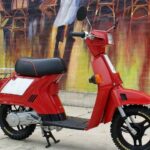

![Moped Vs Scooter [What Are the Differences Between Them?] moped vs scooter](https://roadsumo.com/wp-content/uploads/2021/06/moped-vs-scooter-150x150.jpg)




